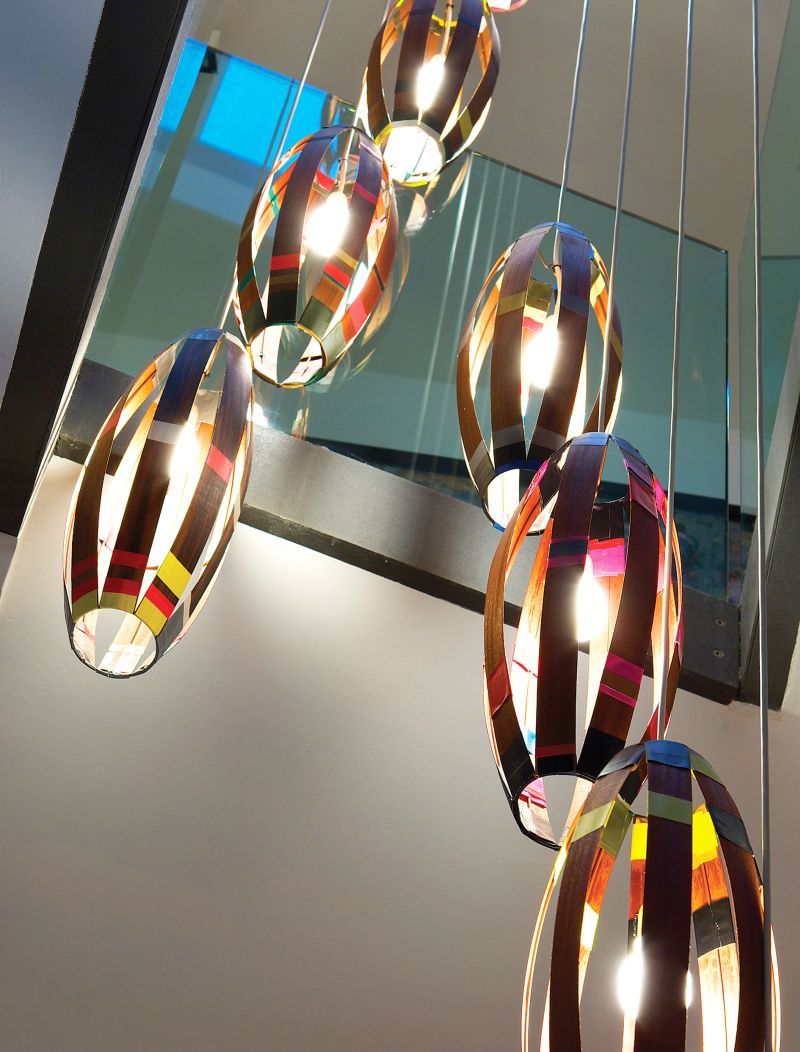Works
Widumi (2002)
Beyond the practical function of lighting up, this work becomes a sculptural object activating the space in a complex way by highlighting the tension between the functional and the artistic. Rehberger uses light for practical purposes, to illuminate, but also to transform the environment, thus modifying the perceptual experience of viewers. Widumi is part of the artist's line of research on how functionality can broaden the aesthetic possibilities. The piece both lights up and establishes a dynamic relation with the space, in which the moving forms and changing colours not only interact with the viewer, but also challenge the conventions of traditional furniture. This work is made from humble materials, such as wood and adhesive tape, something Rehberger uses to explore the idea of ‘poor’ and ‘everyday’ elements, which are transformed into art in his creative process through a precise industrial method. In this way, Rehberger emphasises his interest in taking simplicity and functionality to an aesthetic level, reconsidering the notions of valuableness and ephemerality. Widumi shows the artist’s fascination for modern architecture and the way in which, by intervening the everyday object, he questions the relationship between human beings and the environment they live in. The title of the work is an acronym for the German expression ‘Wie du mir, so ich dir’, which means ‘as you do to me, so I do to you’. It has to do with the fact that these lamps were built by Rehberger's assistants as prototypes that the artist modifies as needed.



